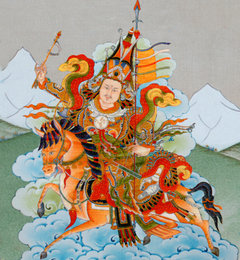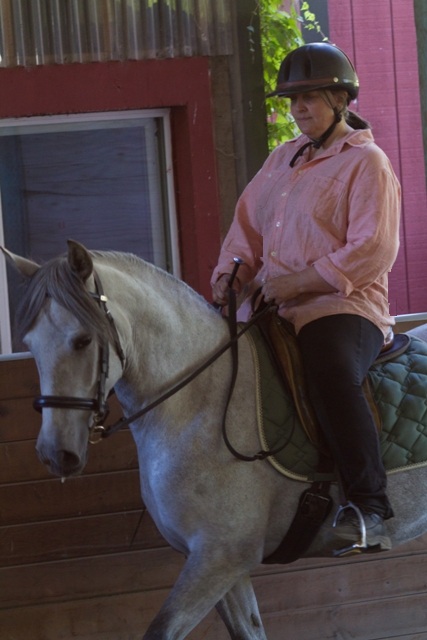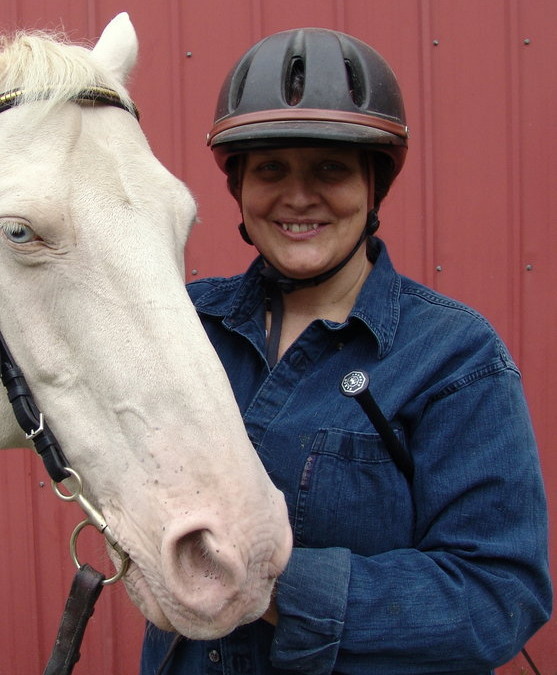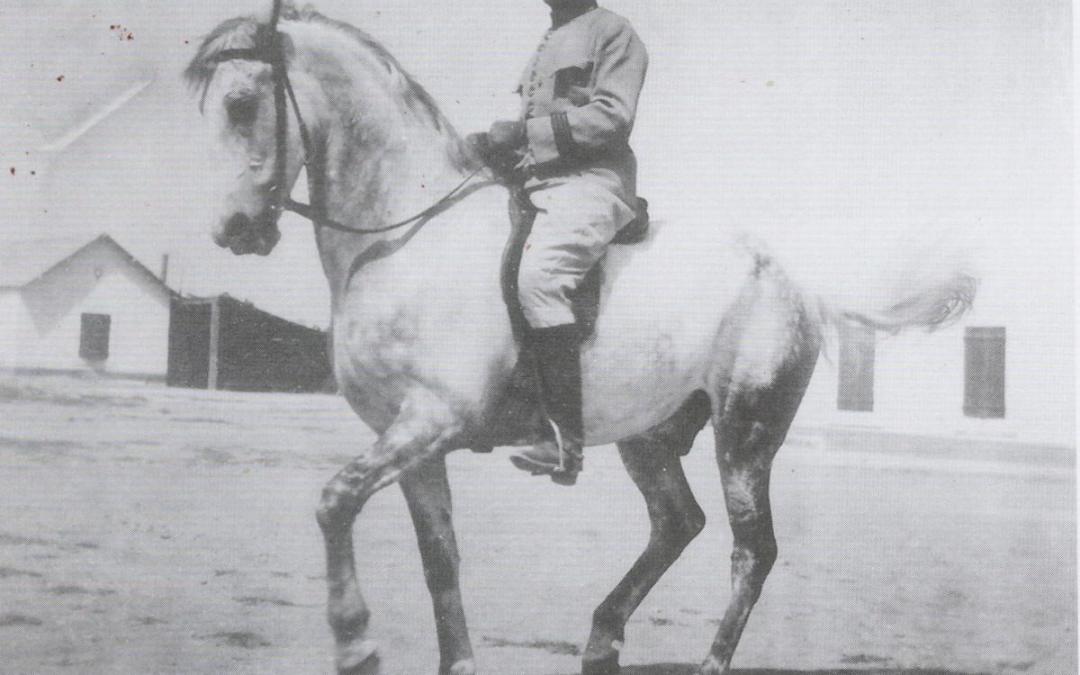
by Craig Stevens | Mar 26, 2015 | Craig Stevens' Blog
I pondered this thought carefully and considered making it a poem, but I became concerned that the poetics might unintentional conceal what I wanted to say or that my poetic attempts would not be strong enough to carry the idea. Teaching dressage well is a difficult thing to do. Not that this idea should surprise anyone, but to keep its simplicity and avoid losing the point in a sea of details is hard, especially when the central point is beyond what a verbal language can express with any clarity makes dressage instruction challenging. The aids and the seat are usually taught mechanically and few people remain with an instructor or get instruction at a high enough level to overcome the issue created by this way of teaching. A few very upper-level teachers solve this issue by avoidance of detail until the student can find the flow and a few others only deal with the flow because they lack the detail. Anyway you look at it, confusion arises and needs to be clarified for wisdom to dawn. When one reads out loud, punctuation informs the orator when to pause and when to take a breath. When on sings or chants a text, punctuation is ignored and the words are allowed to flow together like a river. The actual process of riding and the use of the aids is to find the river and let it flow. In good dressage (whether under saddle or in hand), the aids harmonize with the flow. Energy moves in curved lines. A curved line contains an infinite number of straight lines and so the process...

by Craig Stevens | Mar 24, 2015 | Craig Stevens' Blog
Two components overlooked in the teaching of dressage and in the equestrian literature which produce distortions and dysfunctions in working with the horse or adversely affect rider-horse relationship is the understanding of image and texture of the aids. The first, image, is defined as the memory of a perception that is modified by subsequent experience and that contains both intellectual and emotional elements elicited by intrapsychic and extrapsychic stimuli. The second element, texture, is the visual or tactile surface characteristics and appearance of the connection with the horse through the aids. Texture in the aids is about the experience of the feeling which constitutes an acute awareness of where and how the tactile experience occurs and the orientation in space and time of those feelings. The positive exploration of image and texture are the two factors which bring the quality of a rider’s dressage to higher and higher levels. They are also significant forces in effective teaching and learning in both the horse and the rider. One of the things which makes much of the writing I do unusual is that I commonly express aspects of the emotional element of the experience of dressage. I generally reserve the most technical parts for when I am actually teaching a student with a horse, but here in my writing, I generally sidestep the technical details and only frame the spirit of the work, leaving the reader to find the technical aspect themselves. Texture and image are the constituent parts of view which provides an important component to cultivating a deeper understanding of dressage. Most of the equestrian literature is rather flat...

by Craig Stevens | Mar 23, 2015 | Craig Stevens' Blog
Friend: one that seeks the society or welfare of another whom he holds in affection, respect, or esteem or whose companionship and personality are pleasurable : an intimate associate. (Merriam-Webster) Can you consider the horse as your friend? Perhaps a better question may be can you hold your own self in friendship because if you cannot do so, then how can you extend friendship to the horse? This has to be one of the first steps on the path to a practical dressage. There must be an extension of a feeling of warmth toward yourself and the horse; this is what it means to be an intimate associate. Trust is a state of mind free from doubt which is cultivated by loving kindness, offered with no motive other than the pleasure of joining and so we join minds with the horse. This is what it means to tame the horse and is followed by harmonizing. Our purpose with our friend, the horse, is none other than enlightenment. To enlighten is to be freed from ignorance and misinformation and at every turn in our relationship, our dressage or training, we reveal our open our heart and the horse opens its heart to find a friendship we can share. The image is two deer in the forest who bow to us and each other, with ears forward in our presence. It is a moment where the deer abandon their fears and listen in a relaxed alertness while connected to who they are as members of the heard and as an individual being who are willing surrender their own safety to honor...

by Craig Stevens | Mar 22, 2015 | Craig Stevens' Blog
True listening, like the art of using the aids, is a skill we acquire in good dressage. It is not always easy but is it is more important than learning the use of the aids because without the relaxed harmonization with the horse’s movement, even “correct” aids block the flow of energy when the horse needs to move. The question of the aids is not just how, but also when and listening is what is what is necessary to answer that question properly, We have to come out of our own insecurities and self-absorption, which takes confidence and relaxation to find and feel each moment when we are with the horse. We have to care about another being, the horse, which takes a maturity and a degree of sensitivity. The idea of releasing the aids (descente de mains et descente de jambes) may be fundamental to the discovery and timing of correct aids, but it still takes a mind actively listening and willing to listen. Listening also requires bravery, patience and compassion thus, the noble qualities of a good listening can overcome many of the faults of a poor use of the aids. Even though listening is a receptive act, it is a simultaneously a dynamic endeavor that allows the horse and rider to grow together. In order for listening to occur, we have to relax. When, we do not listen well, there is tension in the body. This kind of tension is related to aggression. Something is preventing us from truly listening. Perhaps we do not fully trust our experience or education and so we are not psychologically...

by Craig Stevens | Mar 21, 2015 | Craig Stevens' Blog
In a general sense, what dressage is commonly missing is a genuine sense of humor. There is a seriousness to the whole thing which becomes problematic for the horse. Correctness and biomechanics are overrated. Modern breeding has produced something which I call, horse+. What I mean by this term is that it may look like a horse in every way but the horse+ is really a genetic freak. The movement of these horses exceeds anything that occurs in natural horses. The uneducated public sees these horse+ horses as an over the top WOW in their movements and presence. They cannot separate the horse from its training and so the elite rider (very wealthy or supported by the very wealthy) are considered as spectacular trainers when in fact working very ordinary and common horses are by far much more difficult, take more skill and knowledge. This has created a distortion in the practice of dressage which has produced the “rolurkur phenomena” and many other issues in riding and training while promoting an aggressiveness in riding which is unhealthy for all concerned and especially for the horse. What is missing from the big money dressage show world is a sense of humor, but it is hard to keep a smile when the value of your million dollar horse and your hundred thousand dollar show budget are always challenged. Showing horse+ horses is very serious business and everything must be correct or else you may find you horse+ to be just a horse. The sense of humor I am talking about is not the result of beating reality into the ground but...







Recent Comments